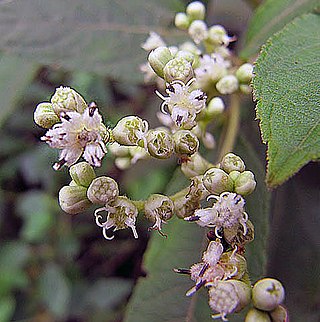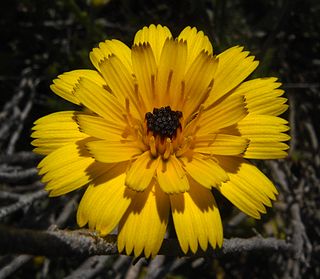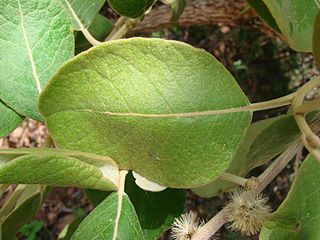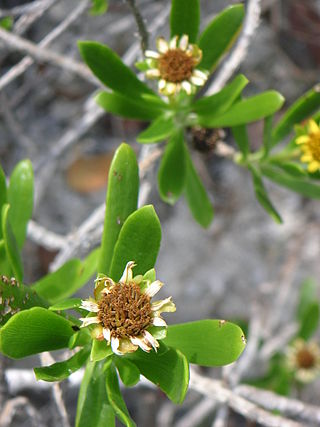| Liabum | |
|---|---|
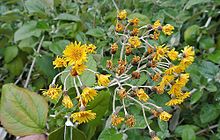 | |
| Liabum igniarium | |
| Scientific classification | |
| Kingdom: | Plantae |
| Clade: | Tracheophytes |
| Clade: | Angiosperms |
| Clade: | Eudicots |
| Clade: | Asterids |
| Order: | Asterales |
| Family: | Asteraceae |
| Subfamily: | Vernonioideae |
| Tribe: | Liabeae |
| Subtribe: | Liabinae |
| Genus: | Liabum Adans. (1763) |
| Synonyms [1] | |
| |
Liabum is a genus of South American flowering plants in tribe Liabeae of the family Asteraceae. [2] [3]
Species accepted by the Plants of the World Online as of December 2022: [4]
- Liabum acuminatum Rusby
- Liabum amplexicaule Poepp.
- Liabum asclepiadeum Sch.Bip.
- Liabum barahonense Urb.
- Liabum barclayae H.Rob.
- Liabum crispum Sch.Bip.
- Liabum cubense Sch.Bip.
- Liabum dillonii D.G.Gut. & Katinas
- Liabum eggersii Hieron.
- Liabum eriocaulon Poepp.
- Liabum falcatum Rusby
- Liabum ferreyrae H.Rob.
- Liabum floribundum Less.
- Liabum grandiflorum Less.
- Liabum igniarium Less.
- Liabum kingii H.Rob.
- Liabum macbridei H.Rob.
- Liabum melastomoides Less.
- Liabum nigropilosum Hieron.
- Liabum nudicaule H.Rob.
- Liabum oblanceolatum Urb. & Ekman
- Liabum ovatifolium Urb.
- Liabum poiteaui Urb.
- Liabum polycephalum Urb. & Ekman
- Liabum robinsonii D.G.Gut. & Katinas
- Liabum saloyense Domke
- Liabum sandemanii H.Rob.
- Liabum saundersii H.Rob.
- Liabum selleanum Urb.
- Liabum solidagineum Less.
- Liabum steinbachii H.Rob.
- Liabum stipulatum Rusby
- Liabum subacaule Rydb.
- Liabum trianae H.Rob.
- Liabum umbellatum (L.) Sch.Bip.
- Liabum vargasii H.Rob.
- Liabum wrightii Griseb.



